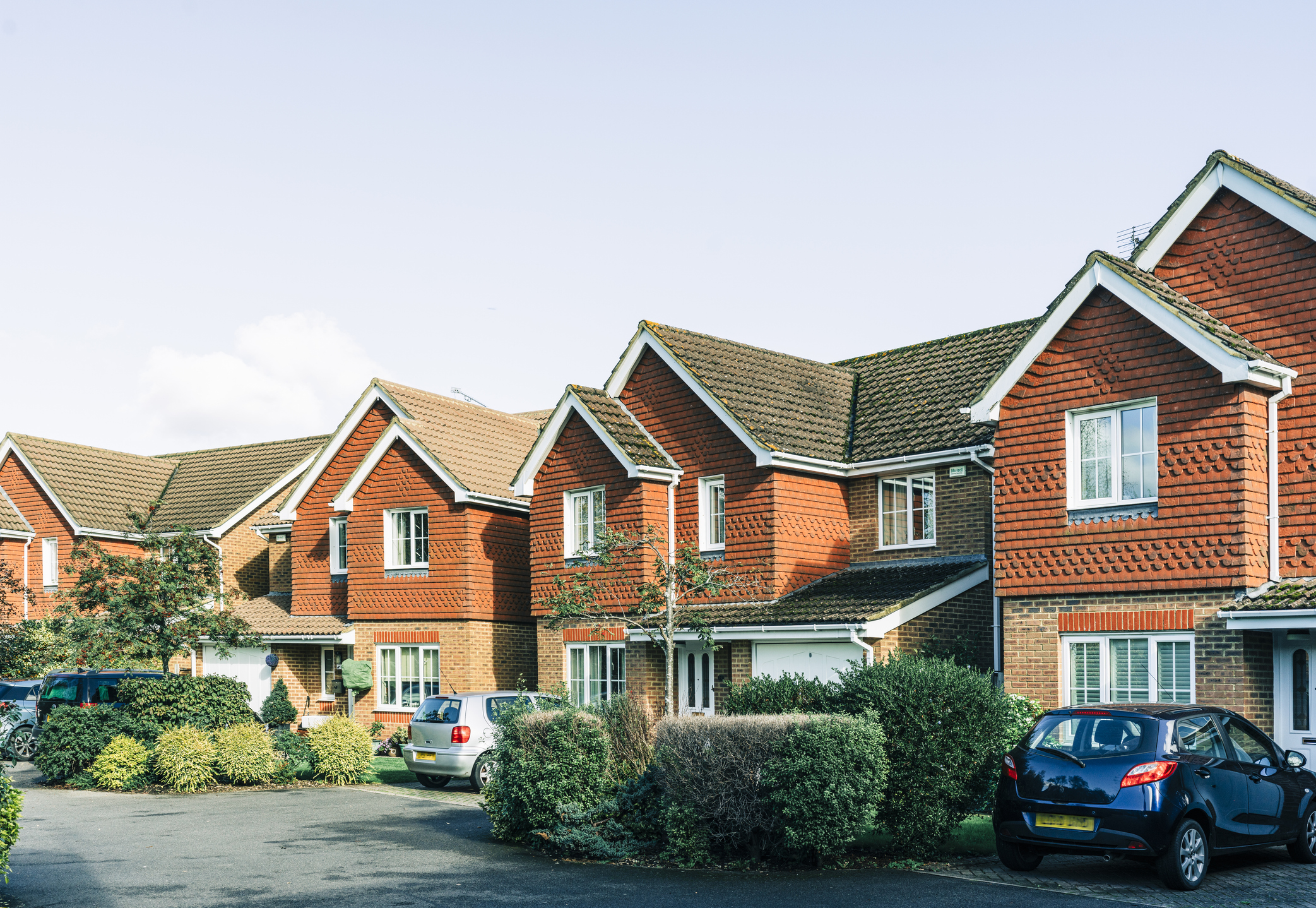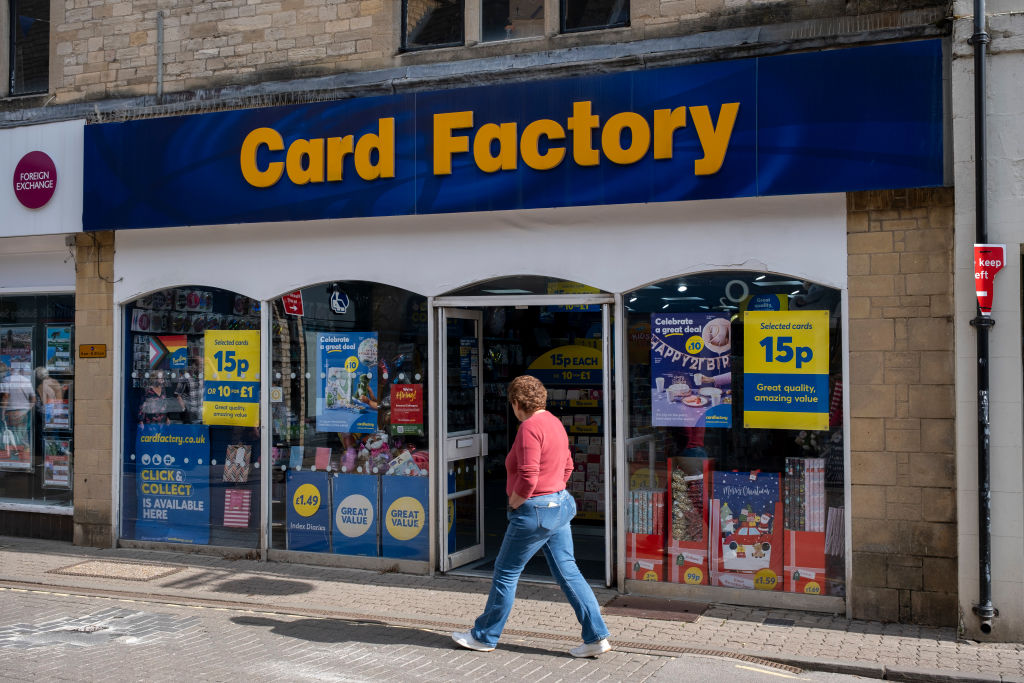What’s happening with UK house prices? Latest property market moves and forecasts
Property market activity has paused in the build-up to the Autumn Budget. Where are prices heading in 2025 and beyond?


Katie Williams
The housing market may have just recovered from stamp duty changes but now many buyers and sellers appear to be putting their moves on hold amid uncertainty about the Autumn Budget.
Official data from the Office for National Statistics and Land Registry average house price growth slowed in August.
Average prices rose by 3% in the 12 months to August, down from growth of 3.2% in the year to July.
MoneyWeek
Subscribe to MoneyWeek today and get your first six magazine issues absolutely FREE

Sign up to Money Morning
Don't miss the latest investment and personal finances news, market analysis, plus money-saving tips with our free twice-daily newsletter
Don't miss the latest investment and personal finances news, market analysis, plus money-saving tips with our free twice-daily newsletter
It comes as more recent data from Halifax shows the average price of a house in the UK fell by 0.3% to £298,184 in September, £794 lower than it was in August.
Many analysts suggest the market is on pause until the Autumn Budget provides clarity on property taxes.
Tom Bill, head of UK residential research at Knight Frank, said: “High levels of supply and a growing sense of uncertainty as November’s Budget approaches are both keeping downwards pressure on demand and prices.”
In particular, owners and buyers of higher-value homes could be stung by a rumoured property tax on the sale of homes above £500,000, which could replace the current stamp duty regime.
Speculation over this has already led to a slowdown in some parts of the property market.
Property site Zoopla says the top end of the market has stalled amid Budget tax speculation, with demand falling by 11% and the number of listings also down by 9% in the five weeks before 29 September.
Similarly, homes listed at over £500,000 have seen a 4% drop in buyer demand and a 7% reduction in new listings over the same time period.
The Treasury has not confirmed whether any taxes on property will be changed at the Autumn Budget.
Where are house prices forecast to go?
The latest sentiment survey from the Royal Institution of Chartered Surveyors (RICS) showed buyer demand and agreed sales remain in negative territory for the third consecutive month in September.
Other forecasters have also tempered their expectations. Savills is now expecting 1% growth in the mainstream market in 2025, down from 4% previously. It cited ongoing stamp duty effects, broader economic challenges and pre-Budget jitters.
Knight Frank has also cut its house price growth forecast. While the firm says stable mortgage rates have encouraged buyers to act so far this year, there is still uncertainty ahead of the Budget.
“A repeat of last year’s game of ‘guess the tax rise’ ahead of the Budget means hesitancy will rise over the next two months, which prompted us to recently downgrade our 2025 UK forecast to 1% from 3.5%,” Bill added.
Although growth has been slow, average property prices are still hovering around record highs. The average UK property costs £270,000, according to Land Registry data published on 17 September – around £8,000 higher than a year ago.
What do official house price figures show?
There are at least five different indices that measure how much UK house prices have gone up or down over the past month and year, but the most authoritative source is HM Land Registry.
The Land Registry has the most comprehensive data set, as it includes cash purchases as well as those financed through a mortgage, but the main drawback is that it is published with a six-week time lag. This means other sources like Nationwide and Halifax can give a better snapshot of current conditions.
Using the “house prices in your area” report from the Office for National Statistics can help you understand how prices have changed in your borough or local authority area. This also uses Land Registry data.
Property asking prices under pressure
The latest asking price data from property website Rightmove for October, shows asking prices were 0.3% higher on a monthly basis, below the typical figure for the period.
Asking prices are a useful barometer for market sentiment as it currently stands. These snapshots tend to be published only a few weeks after the data was recorded. The drawback is that asking prices don’t necessarily reflect the final sold price.
A glut of properties on the market in southern England and higher levels of demand is partly to blame. Given that it is a buyer’s market, experts are encouraging sellers to be realistic when setting a price. “Sellers who reduced their price expectations over the summer are now creating more realistic conditions for sales, which is keeping things moving,” said Matt Giggs, founder of estate agency firm The Giggs Group.
Will house prices rise beyond 2025?
Despite trimming their forecasts, some experts think house price growth could pick up in 2026 and beyond. Savills is currently forecasting 4% growth in 2026, 6% in both 2027 and 2028, and 5.5% in 2029.
The estate agency expects wages to grow 22% between 2025 and 2029. Combined with a strengthening economy in the latter part of this time frame, it thinks it will “boost buyer confidence and the willingness to take advantage of improved mortgage conditions”.
Savills also thinks falling mortgage rates and more relaxed affordability tests from lenders could boost transaction volumes, making it easier for first-time buyers to get onto the housing ladder. Following encouragement from policymakers, some lenders are allowing mortgage customers to borrow more than they could previously.
Under the old rules, less than 10% of new mortgages exceeded 4.5 times a borrower’s income, but the Bank of England recently said it would be happy to see that percentage rise to more than 15%. Nationwide said it means applicants can borrow £28,000 more on average.
Knight Frank has more muted expectations than Savills, but still expects the rate of house price growth to pick up from 2026. It is forecasting growth of 3% in 2026, 4% in 2027, 4.5% in 2028 and 5% in 2029.
Will stamp duty be replaced?
A lot could change between now and the end of these forecast periods, including interest rate expectations, the health of the UK economy, and government policy.
In recent weeks, headlines have focused on rumoured property taxes that could be considered as part of the Autumn Budget.
Areas of speculation have included replacing stamp duty with an annual property tax for homes worth more than £500,000, and ending the capital gains tax exemption on first homes worth more than a certain threshold (such as £1.5 million). There are also rumours that landlords could be hit with National Insurance on rental income.
Zoopla believes a stamp duty replacement could impact market activity in higher-value markets. In August, areas where average prices were below £200,000 saw growth of 2.8%, according to the property site. Pricier areas (£500,000+) “barely moved”. This could reflect broader affordability pressures as well as Budget concerns.
“Our data shows both buyer demand and new listings for homes priced above £500,000 are down compared with a year ago, as some buyers pause to see what the Autumn Budget may bring,” said Richard Donnell, Zoopla’s executive director of research.
As with all pre-Budget speculation, it is possible these rumours will come to nothing. With this in mind, homebuyers and movers should avoid being tempted into knee-jerk reactions and instead focus on current market conditions and their own personal circumstances when deciding on the best time to buy or sell.
Get the latest financial news, insights and expert analysis from our award-winning MoneyWeek team, to help you understand what really matters when it comes to your finances.
Daniel is a digital journalist at Moneyweek and enjoys writing about personal finance, economics, and politics. He previously worked at The Economist in their Audience team.
Daniel studied History at Emmanuel College, Cambridge and specialised in the history of political thought. In his free time, he likes reading, listening to music, and cooking overambitious meals.
-
 Card Factory is a stand-out small-cap going cheap
Card Factory is a stand-out small-cap going cheapIn a digital world, we still value the personal touch. That’s good news for Card Factory, whose unique business model is suited to weather all economic storms
-
 8 of the best smallholdings for sale now
8 of the best smallholdings for sale nowThe best smallholdings for sale – from a medieval cross-passage farmhouse in Taunton, Somerset, to a former farmhouse with an orchard in the Welsh Marches
